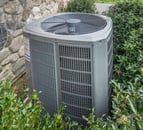 Some people think that the idea of a high-performance building is a new concept, but it has been around for some time now. As defined in the Energy Policy Act 2005, a building that “integrates and optimizes all major high-performance building attributes, including energy efficiency, durability, life-cycle performance, and occupant productivity” is a high-performance one.
Some people think that the idea of a high-performance building is a new concept, but it has been around for some time now. As defined in the Energy Policy Act 2005, a building that “integrates and optimizes all major high-performance building attributes, including energy efficiency, durability, life-cycle performance, and occupant productivity” is a high-performance one.
Today, many builders have already applied the principles of a high performance into their homes, and homeowners are now enjoying the benefits of living in a place that sets the bar much higher for energy efficiency, comfort, durability, indoor air quality, and the use of sustainable products.
One of the most important components of a high-performance home is its HVAC system. To truly deserve the “high performance” tag, a home must have an HVAC system that perfectly meets its cooling load.
Unfortunately, it is not uncommon among HVAC contractors to push for a big, expensive air conditioning unit and let it work its magic. The problem in air conditioning is, bigger is not always better. Far too many “high-performance homes” have installed AC systems that are much larger than they need to be.
The truth is that HVAC equipment should always be right-sized, whether or not the home is of the high-performance kind.
Big HVAC Units Are Hardly “High Performance”
The problem with putting up, say, an air conditioning capacity of one ton for every 500 square feet, is that it cools the area very quickly, but it also short-cycles more often. With the compressor turning itself on and off in such rapid intervals, your HVAC unit can become less efficient, which isn’t consistent with the principles of a high-performance home.
The durability of a big AC unit also takes a hit when it short-cycles often, as it suffers a lot of wear and tear that shortens its lifespan. You also cannot expect an oversized, short-cycling-prone AC unit to adequately remove moisture, dust, allergens, and other particles from the air like it’s supposed to, leading to rising humidity levels and poor air quality.
Bigger AC units do not necessarily serve the purpose of high-performance homes. The solution, as always, is to right-size your air conditioning unit for your home to get the best performance possible from it.
The Correct Way to Right-size Your AC System
The usual way of right-sizing HVAC systems is by rule of thumb. That is, contractors base the tonnage on the square footage of the areas to be cooled, but the problem with this method is that every house is different. There are factors that could vary a home’s cooling load by a significant percentage.
High-performance homes require a more accurate way of right-sizing an HVAC system, and that can only be done using the Manual J.
Developed by the Air Conditioning Contractors of America (ACCA), Manual J is a protocol that is designed to help HVAC contractors calculate a house’s cooling and heating needs more accurately than any rule of thumb ever could.
Admittedly, however, performing Manual J load calculations use to be quite complicated. In the beginning, engineers (who are no strangers to complex calculations) still had to spend a fair amount of their time and patience to complete them. With pen, paper, and slide rules in hand, they used complicated Manual J methodology to determine and analyze the following:
- total amount of heat lost through a home’s exterior during winter
- total amount of heat gained through a home’s exterior during summer
- thermal characteristics of the wall, floor, window, ceiling, and door
- geographical location of the home
- orientation to the sun
- duct leakage
- envelope tightness
- lights and appliances
- amount of heat and humidity that each occupant adds to the home’s interior
Manual J methodology requires that all these factors be considered, and the result is a more precise load calculation for a home, albeit one that takes a lot of time and effort.
However, there are now tools that streamline the whole Manual J load calculation process and make it less time-consuming. When performing a typical Manual J HVAC load calculation using ACCA-approved software, you will need to enter all relevant data mentioned above and more. By the end of the calculation process, you should be able to determine how much cooling and heating each room, zone, and the whole home in general needs at peak conditions in BTUs per hour, and at a much faster time than if you had to do it manually.
With the more accurate room-by-room load calculations that Manual J methodology provides, contractors should find it easier to right-size HVAC equipment that will be in keeping with the principles of an energy-efficient and comfortable high-performance home.
Stephanie Gordon is a content marketing specialist of New AC Unit. Aside from creating online content on energy-efficiency, Stephanie enjoys running and biking with her family and friends to stay fit.
The views, opinions and positions expressed within these guest posts are those of the author alone and do not represent those of the North American Insulation Manufacturers Association (“NAIMA”). These blogs are provided to facilitate dialogue and exchange of views and information and do not imply NAIMA’s endorsement or sponsorship of any statement found therein. The accuracy, completeness and validity of any statements made within these blog posts are not guaranteed. Reliance upon any statement, information, or opinion contained herein is to the users’ detriment and at their own risk. NAIMA assumes no liability for any errors, omissions or representations. The copyright of this content belongs to the author and any liability with regards to infringement of intellectual property rights remains with them.





